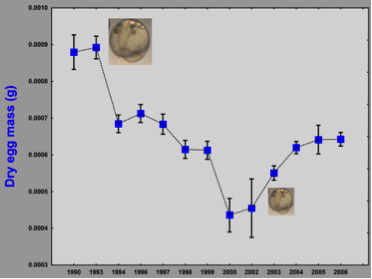Anthropogenic Influences on Stickleback Radiation
The value of the adaptive radiation for the study of evolution is dependent upon up the maintenance of freshwater diversity. Our research suggests that anthropogenic change is causing both the re-emergence of ancestral components of the phenotype via plasticity, and also very rapid contemporary evolution. Unfortunately, many of the changes are resulting in a decline in diversity in the radiation, shifting population phenotypes toward the ancestral condition. Much of our insight into these changes is made possible by our long-term collections and in-water observations of many oceanic and freshwater populations in Alaska and British Columbia. In Alaska, we have collections spanning more than 25 years for as many as 20 populations, and samples spanning 10 or more years for 50 or more; overall, we have sampled more than 150 lakes at least once (see Collection page). In particular, increases in productivity are causing phenotypic shifts from the limnetic ecotype to the benthic ecotype (more similar to the oceanic ancestor; below) and may be causing a decrease in differentiation between the benthic-limnetic species pairs that have served as a model for the study of ecological speciation. Additionally, research in collaboration with David Heins demonstrates that the introduction of non-native northern pike has led to significant, apparently stress-related alterations of female life history in one of our long-term study populations. These effects, observed in reproducing females, included maladaptive reductions in reproductive effort, clutch size, and egg size, each of which likely reduces the reproductive potential of the population, putting it at risk of extinction. Finally, this wave of advance of a voracious predator has also led to evolutionarily-enhanced armoring and antipredator behavioral phenotypes over contemporary time frames
